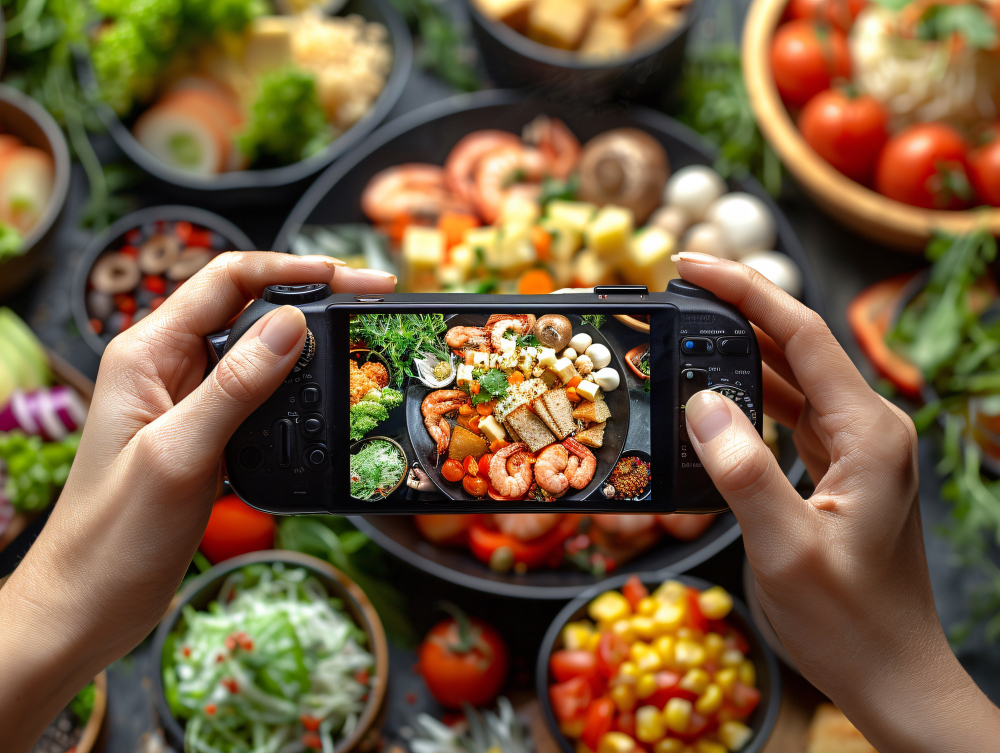Key Takeaways
- Food influencers are driving significant shifts in marketing strategies for brands.
- Authenticity and engagement are critical factors in successful food influencer campaigns.
- Leveraging data and analytics can enhance the effectiveness of influencer collaborations.
Table of Contents
- Introduction to Food Influencers
- The Role of Authenticity in Influencer Marketing
- How to Choose the Right Food Influencer for Your Brand
- Leveraging Data for More Effective Campaigns
- Engagement Strategies: Tips for Brands
- Measuring the Impact of Influencer Marketing
- Challenges and Solutions
- Future Trends in Food Influencer Marketing
Introduction to Food Influencers
In recent years, food influencers have become a powerful force in marketing. These individuals, often possessing a significant social media following, can sway consumer decisions and introduce new food trends. Their exceptional skill in engaging with viewers on an individual level is essential for brands targeting particular markets.
With the digitization of marketing, the role of food influencers has evolved. Traditional advertisements are often perceived as impersonal, but influencers bridge this gap by sharing relatable content. This shift has prompted brands to rethink their marketing strategies, focusing more on organic connections rather than solely on flashy advertisements. Influencers can gain loyal followers by offering a personal touch that resonates with audiences. This makes them a valuable asset in any brand’s marketing arsenal.
The Role of Authenticity in Influencer Marketing
Being genuine is a key element of effective influencer marketing. Consumers are more inclined to have faith in and interact with content that comes across as authentic. Authentic content often means that the influencer truly enjoys and uses the product they are promoting, which resonates well with their audience. This confidence could result in higher brand loyalty and trust from consumers. According to Forbes, authenticity and engagement go hand-in-hand in influencer marketing. An influencer’s ability to be relatable and genuine determines their engagement rate and, ultimately, the campaign’s success. If you’re curious about what are current trends in food marketing and distribution, you’ll find that influencers play a key role. Many consumers today are savvy and can easily detect disingenuous promotions. This is why influencers prioritizing authenticity in their posts tend to have higher engagement rates. Brands that understand this and choose influencers who align with their values are more likely to succeed in their marketing efforts. In an age where authenticity is prized, influencers who make real connections with their followers can drive meaningful engagement and loyalty.
How to Choose the Right Food Influencer for Your Brand
Selecting the right food influencer requires a mix of research and intuition. Brands need to take into account the influencer’s interaction rates, the demographics of their followers, and how their content aligns with the brand’s target audience. Using tools that provide in-depth analytics can assist in making an informed decision.
Ensure that the influencer’s values align with the brand’s values. This alignment ensures authenticity and a more successful partnership. For example, if a brand prides itself on sustainable and ethical practices, it should collaborate with influencers who share and advocate for these values. In this way, the partnership appears genuine and is more likely to resonate with the audience. Furthermore, audiences are becoming more discerning and are more likely to see through alliances that do not align with an influencer’s usual content, leading to decreased effectiveness and potential backlash.
Leveraging Data for More Effective Campaigns
Data and analytics play a crucial role in optimizing influencer marketing campaigns. By analyzing engagement, reach, and conversion rates, brands can tweak their strategies for better results. Platforms that offer detailed analytics can provide valuable insights. An article on Sprout Social highlights the importance of using data analytics in influencer marketing. These insights help brands make data-driven decisions and improve overall campaign performance.
With the correct data, brands can understand what type of content works best and adjust their campaigns accordingly. This level of understanding allows for continuous improvement and more targeted marketing strategies. Additionally, data analytics can help identify the most suitable influencers based on their performance metrics, ensuring a higher return on investment (ROI) for the brand. Employing A/B testing on various content formats and messages can also provide insights into what resonates most with the target audience, further driving campaign success.
Engagement Strategies: Tips for Brands
In order to maximize the effectiveness of influencer partnerships, brands should explore various methods of engagement. These include creating interactive content, such as polls and live Q&A sessions, and encouraging influencers to share their experiences with the product. This interaction strengthens the relationship between the brand and its audience. Additionally, being responsive and engaging with followers in the comment sections of influencer posts can boost the campaign’s effectiveness.
Another effective engagement strategy is hosting giveaways or contests in collaboration with influencers. This generates excitement and encourages audiences to engage more actively with the influencer and the brand. By creating a sense of community and involvement, brands can foster long-term loyalty and enhance their presence in the market. Integrating user-generated content (UGC) into campaigns can also amplify engagement, as it allows followers to become a part of the brand story.
Measuring the Impact of Influencer Marketing
Measuring the impact of influencer marketing goes beyond just tracking likes and comments. Brands must look at KPIs such as click-through rates, sales conversions, and overall ROI. By doing so, they can determine the effectiveness of their campaigns and make necessary adjustments. Using UTM parameters and setting up goals in Google Analytics can help track these metrics accurately.
Tracking the performance of individual posts can provide insights into which types of content resonate most with the audience. This allows brands to refine their strategies and focus on creating content that drives the most engagement and conversions. Moreover, understanding the cost per engagement and cost per conversion can help brands allocate their marketing budget more effectively, ensuring maximum impact and efficiency in their campaigns.
Challenges and Solutions
Despite its many benefits, influencer marketing has challenges. These include finding influencers, managing campaign costs, and ensuring consistent content quality. Brands can navigate these challenges by setting clear expectations, maintaining open communication, and continuously evaluating campaign performance.
Building long-term relationships with influencers can also mitigate some of these challenges. Trusted influencers are more likely to provide consistent and high-quality content. Additionally, fostering strong relationships with influencers can lead to more organic and authentic promotions as influencers become more familiar with and invested in the brand. Implementing structured contracts and agreements can also help manage expectations and ensure that both parties are aligned in their goals and deliverables.
Future Trends in Food Influencer Marketing
Several trends are likely to shape the future of food influencer marketing. These include increased use of video content, greater emphasis on micro-influencers, and the integration of augmented reality in influencer campaigns. Staying abreast of these trends can help brands remain competitive and innovative in their marketing efforts.
Embracing these future trends will require brands to be adaptable and forward-thinking, ensuring they continue to engage audiences effectively. Video content, such as short-form videos on platforms like TikTok and Instagram Reels, is becoming increasingly popular and can provide a more dynamic and engaging way to promote products. Micro-influencers, who typically have smaller but highly engaged followings, offer brands the opportunity to target niche audiences effectively. Integrating augmented reality (AR) can create immersive and interactive user experiences, enhancing brand engagement and loyalty.







